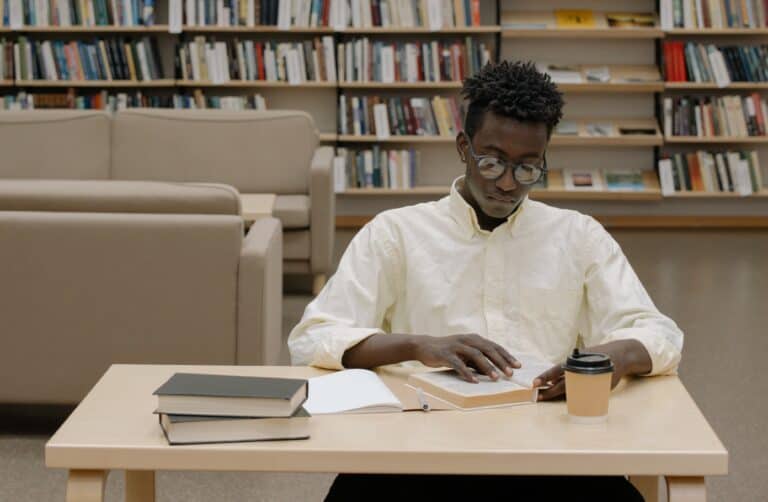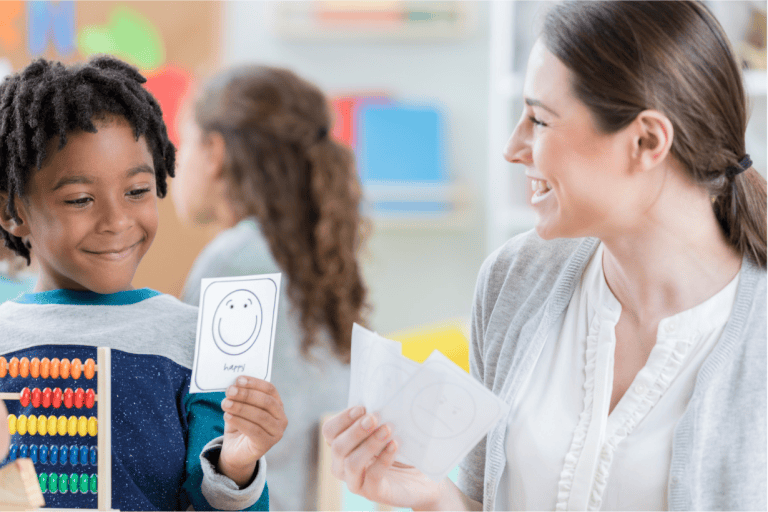Skills for “The Good Life”: Today’s Kids Don’t (Yet) Have Them
I feel like I need to preface this post with a disclaimer (which I encourage students – especially girls – never to do). But here goes: I am an optimist. No one has ever accused me of not being idealistic enough, not seeing the sunny side, not hunting the good. I’d even say that I am a techno-optimist – on balance, I believe that technology is a force for good.
But two things in the last week have shaken my optimism. First, I read The Good Life: Lessons from the World’s Longest Scientific Study of Happiness by Robert Waldinger and Marc Schulz, the co-directors of the well-celebrated Harvard Study. Second, I’ve been reading qualitative survey responses from thousands of students about their experiences with face-to-face communication.
Here’s my worry: today’s students lack the relational skills they need to lead “The Good Life,” and we don’t yet have a large-scale solution for how to teach them.
The Key Ingredient for The Good Life: Deep Relationships
The basic gist of The Good Life is this: in 1938, psychologists in Boston set out to study what makes people flourish – what keeps people well, rather than what makes them sick – over a lifetime. Half of the study participants were graduates of Harvard College, and half were boys chosen from the inner city of Boston. Harvard researchers tracked – surveyed, interviewed, reviewed medical records of – these people through their lives and did the same for subsequent generations in each family. This is beyond-Olympic-level social science research.
Waldinger and Schulz give the punchline:
“To say human beings require warm relationships is no touchy feely idea; it is a hard fact. Scientific studies have told us again and again: human beings need nutrition, we need exercise, we need purpose, and we need each other […] after eighty four years of study and hundreds of research papers there is one simple message: positive relationships are essential to human well-being” (29).
It sounds simple, but “interdependence” and “positive relationships” are difficult to come by in today’s tech-centric world. As MIT Professor Sherry Turkle famously says, our screens make us “alone, together.” Waldinger and Schulz spend the second half of their book making the case for the power of intimacy – which they think of as the “relationships that are strong enough to be a kind of safety net” – and offering readers strategies to reconnect with themselves and each other.
Ultimately, Waldinger and Schulz are optimistic, believing that the ability to build deep relationships is actually a skill that can be practiced and learned. And they point out that: “we do have one crucial advantage over tech giants. The war for our attention is being fought on our home turf, quite literally in our minds. And it can be won there” (131).
The Good Life Question For Today’s Kids: How can we teach these deep relational skills?
Waldinger and Schulz’s thesis that relational skills are learnable, that they can be developed over time in adults, is great news – but what about the kids?
What can we do today to get ahead of this curve, to proactively teach the relational skills kids need to lead “Good Lives” as they grow up in a world where technology increasingly – and relentlessly – threatens to isolate them?
Certainly, the challenges today’s kids face are eye-watering – mental health crises, academic skill gaps, social media addiction. But, as any great teacher knows, the key to effective teaching is “chunking:” that is, breaking big, complicated concepts into digestible bits.
And so as I read The Good Life, I kept thinking about how to “chunk” examples of where students are struggling to communicate and build trust – so that we might, as educators and researchers, begin to help solve them.
In my work, I see kids struggling with the basic relational skills they need to build the “Good Life” in three core areas:
1. Lack of confidence communicating live, with strangers.
This one is no surprise – today’s middle schoolers were the first kids to have iPads instead of conversation in restaurants and to have grown up in houses without landline phones that demanded real-time answering. The aggregate impact of decreased live human interactions have made today’s kids timid and anxious communicators – even in casual, low-stakes environments like sitting through adult conversation at dinner or answering a phone.
At R.E.A.L.®, we’ve seen this lack of confidence clearly in survey responses from middle and high school students when we ask how discussion skills are useful to them in their lives beyond schools. Their answers are horrifyingly concrete and betray anxieties we used to associate with early childhood, not adolescence. They say things like: “discussion skills are useful for when I have to talk to humans, it’s not as scary” or “now I can go into a store and not stand there with my head down when somebody is talking to me.”
2. Lack of confidence expressing themselves within a community.
Like adults in workplaces, today’s kids are terrified of being “canceled” – and of course, adolescents are already biologically hardwired to constantly calculate insider/outsider status. This anxiety shows up in many different ways, but all betray a fundamental lack of trust in each other; they are scared of the re-post, the surreptitious video recording, or just plain being misunderstood or disagreed with – and not being given the opportunity to talk it through.
For example, a Head I spoke to recently observed that his school’s pep rallies have felt “flat” for the last few years – which he attributes to students being too scared to go all-in, terrified someone will make a video that will live forever, ruin their college admissions prospects, or get them socially “canceled.” At the classroom level, many, many teachers we work with have reported a rush-to-consensus in class discussions – they see that students are scared to dig in and disagree. Kids, too, are hyper-aware of this tendency – we see dozens of survey responses expressing sentiments like: “I used to be scared to talk because I thought I would be wrong. Now I know my peers will listen to me and respect me.” “I don’t talk because I don’t want to be wrong.” “I used to say things just to get a good grade and have it be over.”
3. Lack of confidence having hard conversations with people who matter deeply to them.
When you ask adults about the difference between the type of communication that should take place in writing (or texting) versus what should be live, the sentiment is clear: if it’s a hard conversation, it should definitely take place in person. The idea, of course, is that by talking to someone live, you are dignifying the difficulty of the content: the lay-off, the break-up, the misunderstanding. It’s a sign of respect and of an intention to be as clear as possible. You will be better able to communicate, to read and react to your words’ reception thanks to non-verbal cues like body language, and plus, from a liability perspective, there will be no written record of the conversation.
But if you ask kids this same question today, their instincts are precisely the opposite. Their eyes get wide and they say things like “I would NEVER say that in person” or “Nah, that stuff is for text.” Their perspective is consistent: hard conversations – even those with people you love – should happen over text (or another messaging app) in order to “not put the other person on the spot” and to “offer privacy and time to respond.”
Although kids frame this approach in terms of thoughtfulness – it’s a sign of respect to give people space – I think it stems from a fundamental lack of courage … and trust. What’s more, this approach robs them of the micro experiences that are the building blocks of what Waldinger and Schulz call intimate relationships. When communicating through a screen, kids don’t see the impact of their words on others –they don’t see their friend’s shoulders slump, eyes tear up, fist clench. They don’t feel seen when on the receiving end they go cry in their bedroom before responding with a curated line of emojis. The “privacy” they give each other – and which is made possible by technology – is actually painful.
Taking even just these three concrete examples as a starting point can help us begin to pinpoint what is at stake when we talk about relational skills – and, ultimately, begin to design frameworks and tools for teaching them.
While it might feel daunting, there is good news (I am an optimist, remember?). In our work, we have found that these basic relational skills are teachable. Our research shows it is absolutely possible to increase students’ confidence communicating live.
Our research shows it is absolutely possible to increase students’ confidence communicating live.
But in today’s world, kids aren’t going to just learn these skills naturally; they need to be taught, practiced, and celebrated in school. And that means we need to empower educators with tools for making their classrooms places full of live conversation – and connection.
We know that when children feel that they belong – that is, they feel seen, heard, connected to others – they learn better. Now, thanks to Waldinger and Schulz’s work, it’s safe to say that these are skills that will help them live better, too.
Here’s to the good work – and good lives – ahead!






